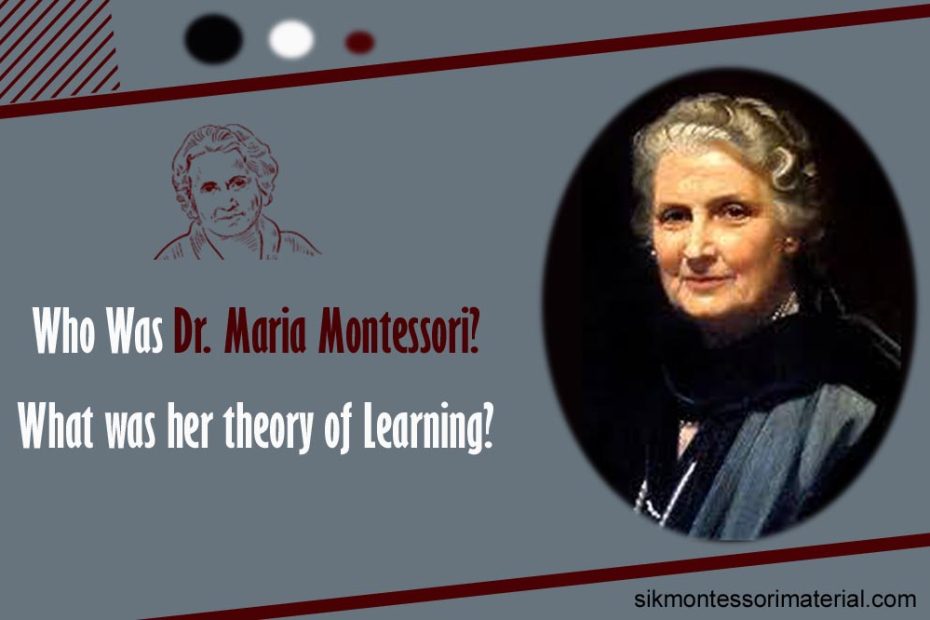Who Was Dr. Maria Montessori: Life & Works
Dr. Maria Montessori, born on August 31, 1870, in Chiaravalle, Italy, was a remarkable educator and innovator who revolutionized the way we think about learning and child development. Her journey from a determined medical student to a visionary advocate for children’s education has left an indelible mark on the world. Let’s delve into her life, her groundbreaking theories, and the enduring legacy she left behind.
Early Life and Education
Maria Montessori’s parents played a significant role in shaping her curious and determined nature. Her father, Alessandro, worked as an accountant, while her well-educated mother, Renilde Stoppani, instilled a love for reading. Despite societal norms, Maria’s education broke barriers. Initially aspiring to become an engineer, she eventually chose the unconventional path of medicine.
After finishing secondary school, Maria set her sights on medical school, despite her parents’ encouragement to become a teacher. Facing obstacles due to her gender, she persisted, with Pope Leo XIII’s endorsement, and in 1890, she became one of the first women to attend the University of Rome’s medical school.
A Compassionate Doctor and Advocate
Dr. Montessori’s medical career exhibited not only her competence in patient care but also her dedication to social causes. Joining the Women’s Rights movement and treating patients from all walks of life, she ventured into the field of children with learning disabilities. Her involvement in the psychiatric clinic of the University of Rome introduced her to the needs of these children.
The Birth of a Unique Approach | Montessori Method
Maria’s deep interest in child development led her to co-direct the Orthophrenic School, where she could shape her ideas further. In 1907, she opened the first “Casa dei Bambini” (Children’s House) in a deprived area of Rome. Here, she implemented her novel approach – observing how children naturally learn and grow when provided with the right environment and materials.
Dr. Montessori’s insights gained traction, leading to the rapid expansion of her approach. Montessori societies, training programs, and schools sprung up worldwide. She tirelessly traveled, spoke, and lectured, sharing her revolutionary ideas in countries like the United States, the UK, and Europe.
Her Carrier as an Educationist
Her pivotal work began in 1907 when she directed a day-care center for normal children in San Lorenzo, Italy. Montessori’s approach was rooted in natural learning environments, utilizing sensory apparatus she had developed earlier. She didn’t implement a fixed instructional system; instead, she observed the children’s reactions to her materials and methods. Surprisingly, young children as young as four and five displayed spontaneous reading and writing skills through manipulation of sandpaper letters, demonstrating the potential for early literacy.
Montessori’s breakthroughs were far-reaching. She believed her findings held universal truths, so she opened multiple schools in different locations. By 1909, Italian Switzerland had embraced her methods, and visitors from around the world came to witness the exceptional development of the “remarkable children” in Montessori schools. In 1909, her book “The Montessori Method” provided a comprehensive account of her pedagogical approach.
Her influence extended globally. She visited the United States in 1912, leading to the formation of an American Montessori association. Despite the disruptions caused by WWII and Fascist regimes, Montessori’s methods continued to flourish. In 1922, she was appointed Government Inspector of Schools in Italy, but the increasing exploitation by the Fascist regime led her to work primarily from Barcelona and later settle in the Netherlands.
She traveled to India in 1939 for a training course and established multiple schools there, despite being interned during WWII due to her Italian nationality.
Montessori passed away in the Netherlands in 1952. Her legacy endures through the Association Montessori Internationale, headquartered in Amsterdam, and her educational principles continue to influence modern educational practices worldwide.
A Life of Commitment and Legacy
In Spain, Maria established the Association Montessori Internationale (AMI) with her son, Mario. However, the rise of fascism in Europe hindered the movement’s progress, resulting in the closure of Montessori schools. She fled the Spanish civil war, lectured in India, and developed “Cosmic Education,” a concept supporting children aged 6 to 12.
Maria Montessori’s dedication to education and peace led to her Nobel Peace Prize nominations in 1949, 1950, and 1951. She spent her final years in the Netherlands, passing away at the age of 81 in 1952. Her legacy lives on through her son, Mario, who continued her work.
Conclusion
Dr. Maria Montessori’s journey from a determined medical student to a pioneering educator is a testament to her indomitable spirit. Her revolutionary approach to education, emphasizing the importance of fostering a supportive learning environment, has transformed countless lives. Her legacy thrives in Montessori schools worldwide, shaping young minds and inspiring a brighter future.
